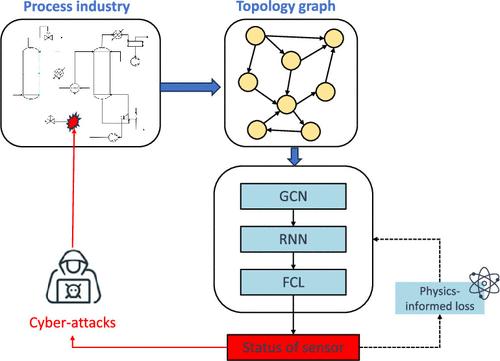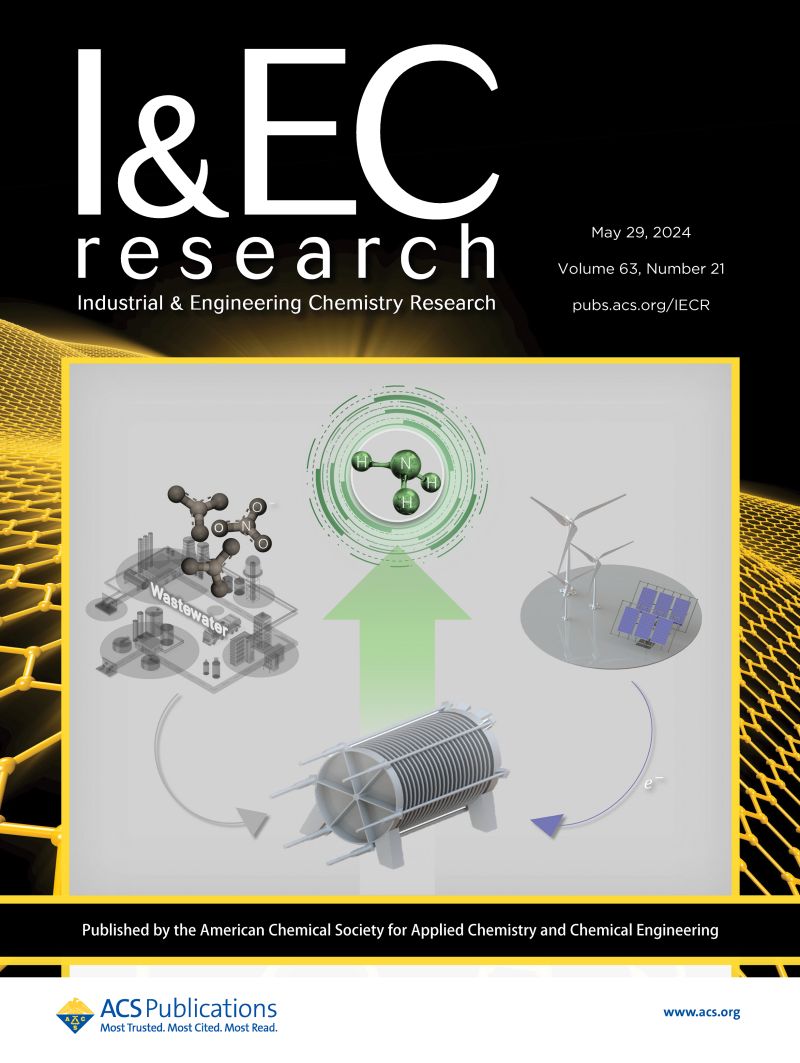Physics-Informed Graph Convolutional Recurrent Network for Cyber-Attack Detection in Chemical Process Networks
IF 3.8
3区 工程技术
Q2 ENGINEERING, CHEMICAL
引用次数: 0
Abstract
Cyber-attacks pose a significant threat to the safety and operational efficiency of industrial chemical processes. Traditional data-driven detection methods often require sufficient training data to achieve the desired detection accuracy. However, for complex chemical process networks, such data sets are often unavailable or insufficient, limiting the effectiveness of these approaches. To address this challenge, this work presents a physics-informed graph convolutional recurrent network (PIGCRN) that incorporates both spatial and temporal information on chemical process networks and a priori knowledge of attacking patterns to improve the detection of cyber-attacks while reducing the requirement on extensive training data. A chemical process network consisting of two reactors is simulated in Aspen Plus Dynamics to demonstrate its superior performance in detecting cyber-attacks compared to traditional data-driven methods.

求助全文
约1分钟内获得全文
求助全文
来源期刊

Industrial & Engineering Chemistry Research
工程技术-工程:化工
CiteScore
7.40
自引率
7.10%
发文量
1467
审稿时长
2.8 months
期刊介绍:
ndustrial & Engineering Chemistry, with variations in title and format, has been published since 1909 by the American Chemical Society. Industrial & Engineering Chemistry Research is a weekly publication that reports industrial and academic research in the broad fields of applied chemistry and chemical engineering with special focus on fundamentals, processes, and products.
 求助内容:
求助内容: 应助结果提醒方式:
应助结果提醒方式:


